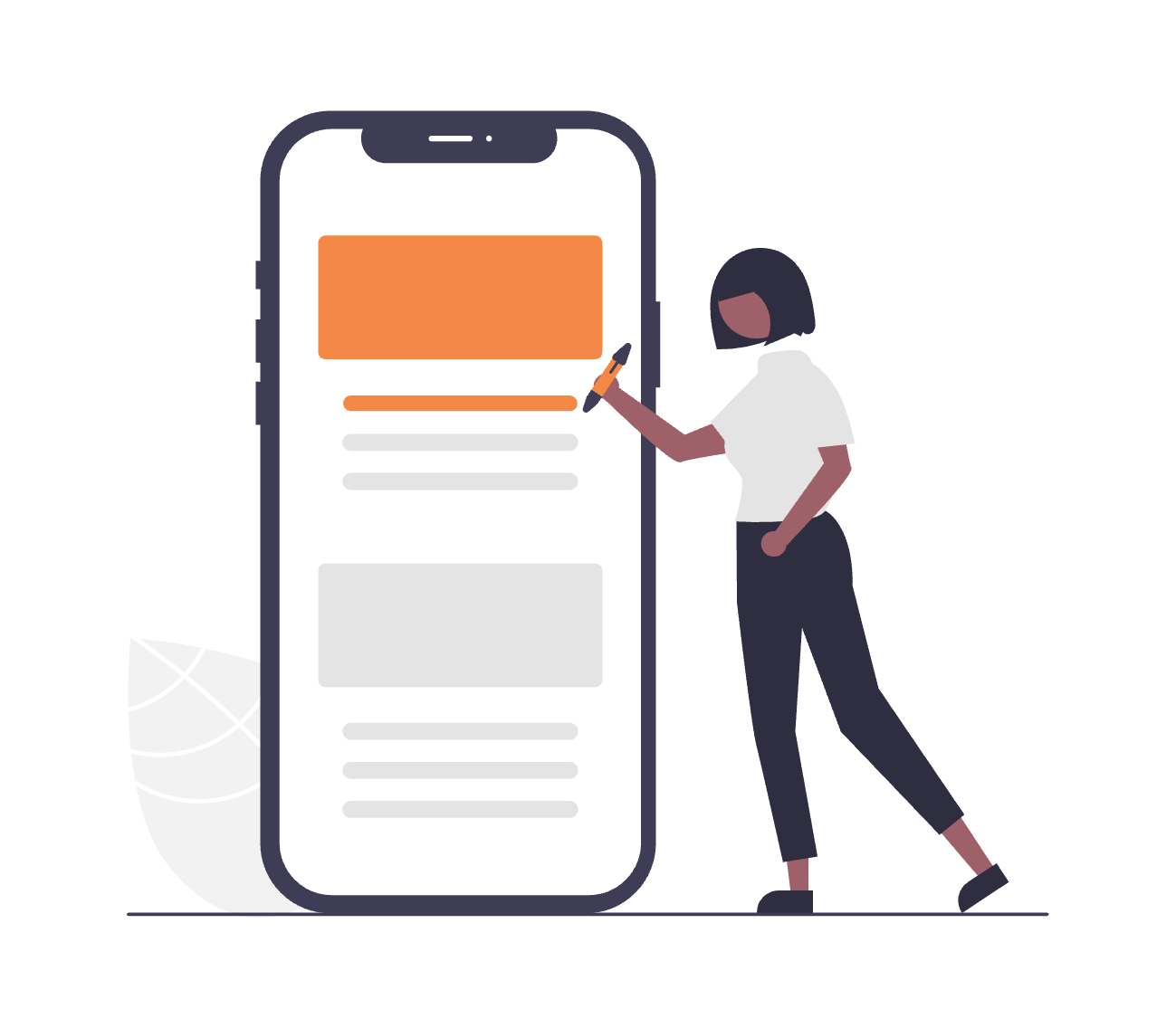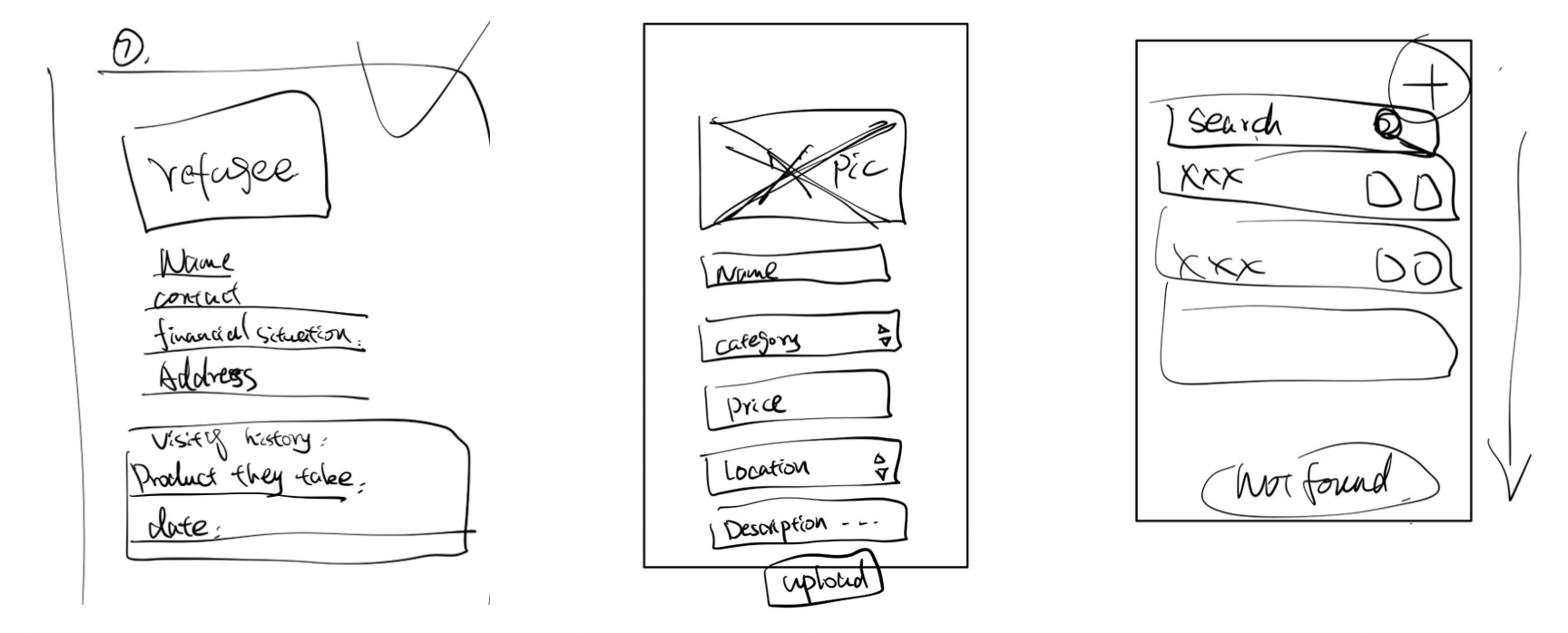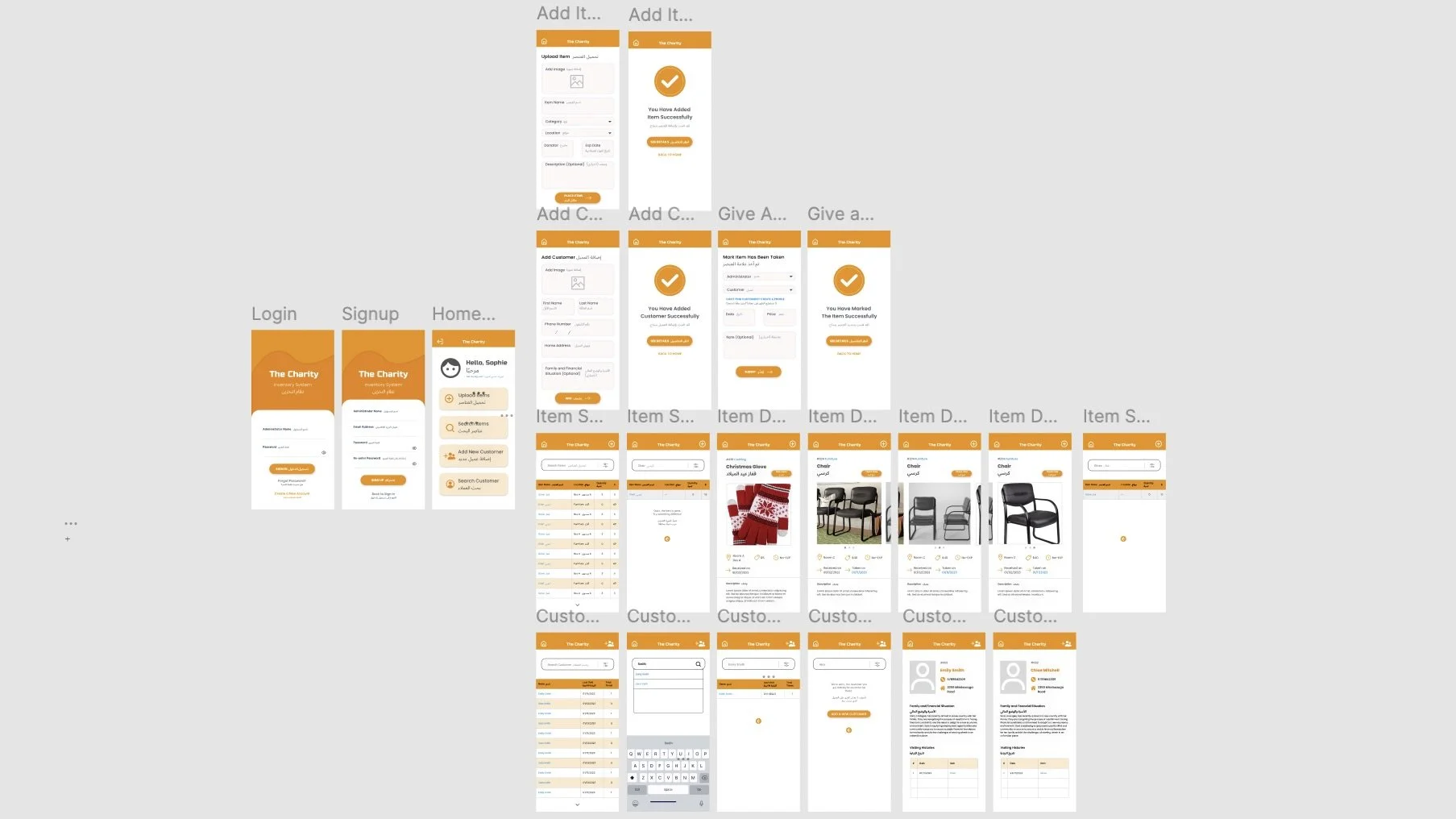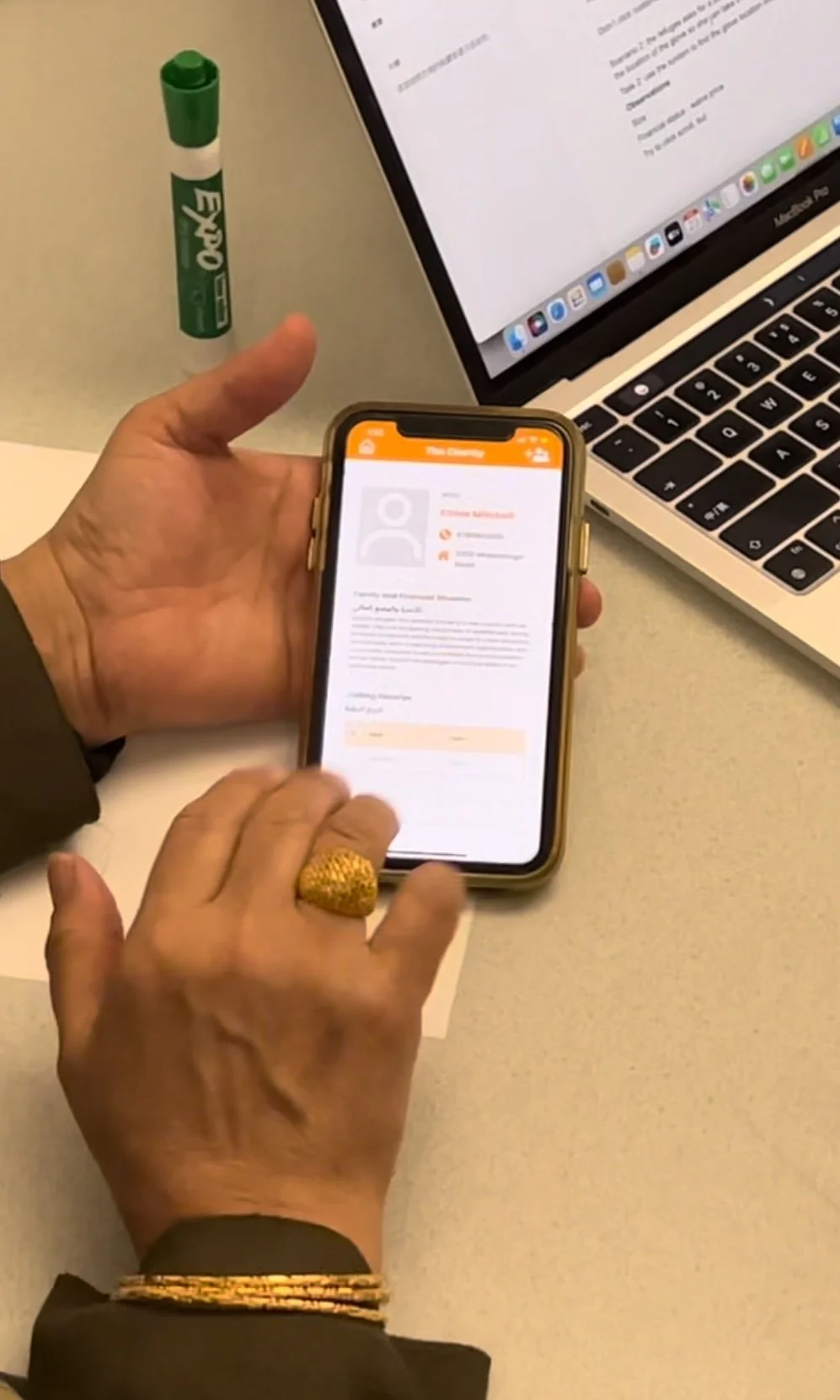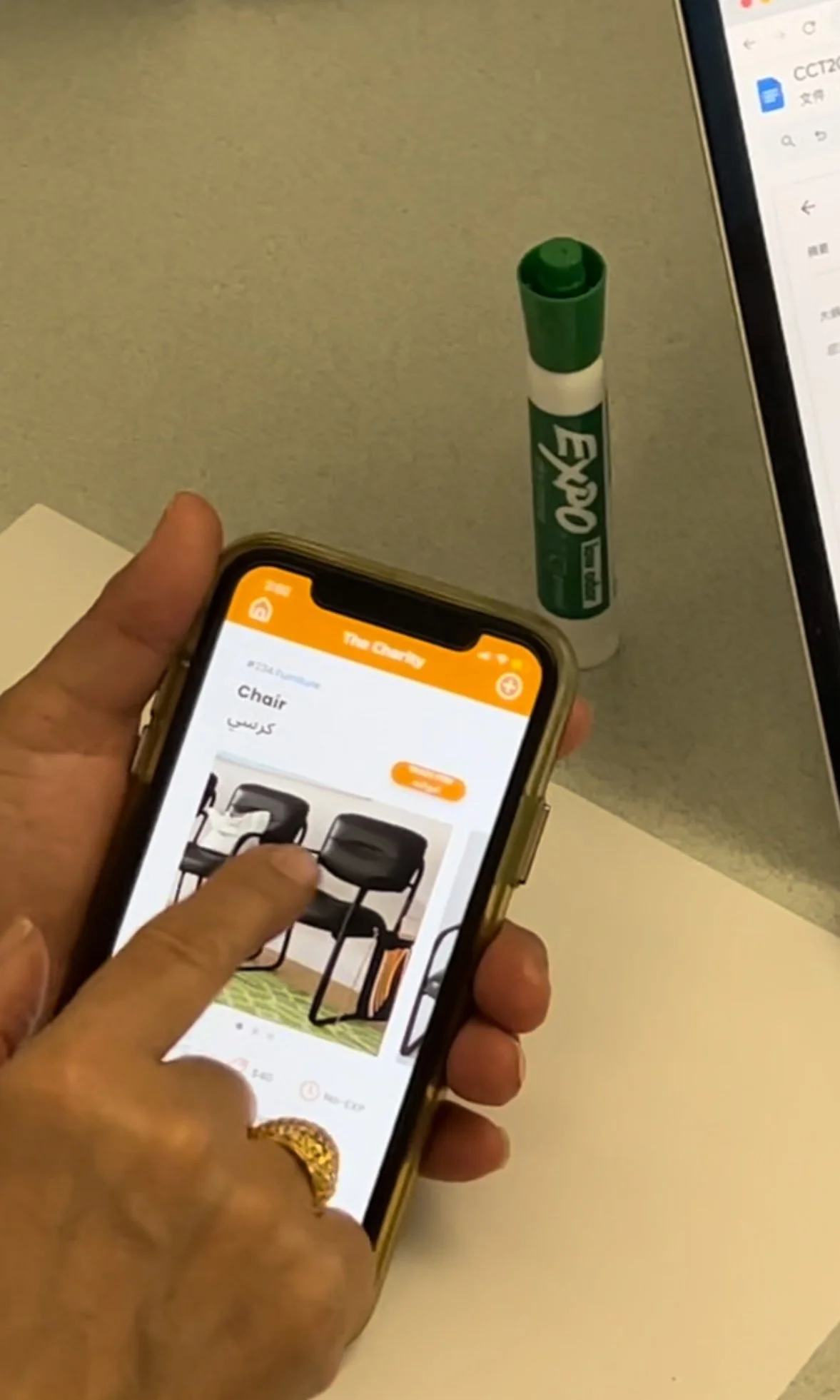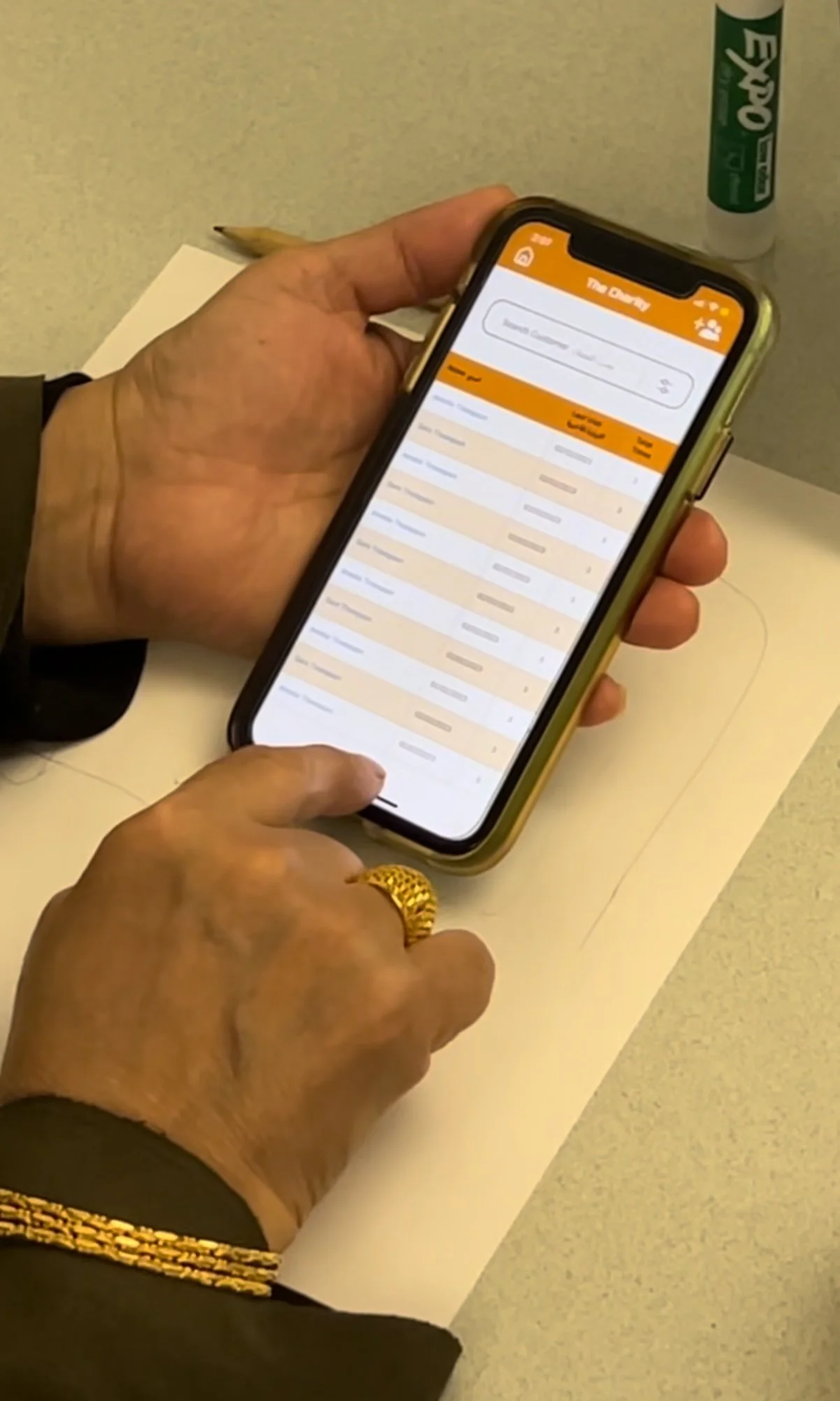
The Charity
An Inventory Management system for the seraj societ
To address the challenges faced by a non-profit organization-The Seraj Society, the system aims to improve inventory management by enabling the director to efficiently organize, track, and record donations. By doing so, we hope to reduce the director of the charity organization's workload and improve the overall operational efficiency.
Project Type: UX Research & Design, Inventory Management System
Duration: 10 Weeks
Role in Team: User research, prototyping, user testing, and accessibility improvements
Tools: Figma, otto, Google Docs, Microsoft Excel
The Background
The Story
The Seraj Society is a non-profit organization, committed to supporting refugees by providing essential supplies such as clothing, furniture, and household items. However, due to the absence of a digital tracking system, donations often pile up in disorganized stacks, making it difficult for staffs and visitors to find items. Also, the reliance on director’s manual record-keeping, using notebooks, make the problem even worse. Manual record stops effective information sharing as well as tracking the donation and visitors coming history.
Why did The charity project inspire us?
When we first met with the Seraj Society, we are so welcomed by the director there. During our observation, we found the overwhelming workload shouldered by the director, who not only manages the inventory but also handles other choses including but not limited to donor organization, and refugee reception. Her dedication to helping others, despite limited resources, deeply resonated with our team.
We were deeply moved by the mission and goals of the Seraj Society. However, existing management challenges are limiting their impact. This inspired us to design a simple and user-friendly inventory management system to help the organization improve efficiency, reduce administrative burdens, and better focus on serving the community.
Challenges
How can we design a simple and smartphone-friendly inventory management system to improve the organization, tracking, and sharing of information for The Seraj Society, while addressing its current resource limitations?
Lack of Digital Tools
The director is unfamiliar with digital devices (except for cellphones) other than notebooks, making manual record-keeping the only option.Bad Information Sharing
Due to the absence of an information-sharing mechanism, only the director is aware of inventory and pricing details. thus, the director has to be there 24/7. Disorganized Inventory
Donated items are not categorized, and the storage area lacks clear labels, making it really hard to locate items.Safety Risks
Some storage shelves have deformed over time due to heavy loads, posing potential safety hazardsTHE Research
-
GOING THROUGH THE TARGET USER, THE METHDOLOGY, AND THE KEY FINDINGS
-
DECIDE THE CORE PROBLEM AND THE SECONDARY PROBLEMS
User research insights
-
The director of The Charity, an Iraqi woman who is resistant to most digital technologies except smartphones
-
Conducted on-site observations of inventory rooms.
Interviewed the director to understand her challenges and expectations.
Used qualitative analysis methods, including empathy mapping
METODOLOGY NO.1 : on-site observations of inventory rooms
Current Challenges
Manual Record-Keeping:
Handwritten recording, on the notebook, leading to diffcult item-tracking.
Lack of Digital Knowledge:
The director’s non-tech savvniess required the smart-phone compatiable app instead of a laptop one.
Information Syncing Issues:
There is no effective mechanism for sharing inventory information among the director and the volunteers
Disorganized Inventory:
Donations, including clothes, furniture, and household items, are stored in a messy and unorganized manner.
METODOLOGY NO.2 : the interview with the community director and volunteers
Director & Volunteers’ Needs and Pain Points
Overwhelming Workload:
Tedious work for the director only
Limited time and resources
Dependence on the Director:
Director: knows all the details of the inventory, such as item prices, availability, and locations.Volunteers: lack of information, cannot operate independently without her guidance
Need for a Tracking System:
A simple and efficient system is required to track the location, quantity, and condition of items in stock, as well as the refugees' visit history.
Language Barrier:
The director is more comfortable with Arabic than English. This emphasizes the need for bilingual features in any proposed solution
THE PROBLEM DEFINITION
We created a comic strip to illustrate a situation frequently encountered by the director. The director struggles to communicate with volunteers, leading to situations where some refugees repeatedly collect items over a few days without the volunteers knowing. This lack of communication creates challenges for effective management. Based on this comic, along with field observations, interviews, and the user empathy map, we identified the core problem and outlined the secondary issues.THE CORE PROBLEM
Lack of a non-tech-savvy inventory management system to track, organize, and record items efficiently
SECONDARY PROBLEMS
Over-reliance on the director for inventory knowledge.
Inefficiency in locating items.
Limited information sharing among staff
IDEATION
-
Generate creative ideas to solve the challenges faced by The Charity
-
Visualize the ideas generated during brainstorming.
-
TO SOLVED THE CORE PROBLEMS
BRAINSTORM
We used brainstorming and mind mapping to identify potential solutions for a non-tech-savvy inventory management system. The process helped us explore various aspects, including recording, tracking, organizing donations, and enhancing user experience.Sketch & SELECTED FUNCTIONS
SKECTCH
We created the sketch during the brainstorming phase are visual representations of the ideas we developed. These rough layouts were designed to simulate the prototype's core functionalities, such as donation uploads, customer tracking, and inventory search.selected functions
Upload Items
Search Items
Add/ Search Customers
Customers Tracking
Prototype
-
using Figma to provide a realistic representation of the final product
-
selected the key features and explain more details about it
high0fidelity prototype
You can click the Button below to try the Figma
upload items
key screenshot
Step 1: login (setup a new account or just sign in)
Step 2: click upload item.
Step 3: the button will navigate you to a new page, click place item.
Step4: then you add a new item sucessfully, you can either see the item details or back home
add new customers
Step 1: Access the "Add Customer" section from the homepage.
Step 2: Input customer information, including name, contact number, financial status, and family details.
Step 3: Review the entered details and click the "Save" button.
Outcome: A success message confirms that the customer profile has been created, with an option to view the profile or return to the homepage.
search items
Step 1: Search for an item in the inventory using the search bar.
Step 2: Select an item from the results to view its details.
Details Shown: Name, category, condition, size, and availability status (e.g., "In Stock" or "Out of Stock")
Outcome: Enables staff to quickly check item information or prepare for distribution
Track customers
Step 1: Search for a customer using the search bar on the "Search Customer" page
Step 2: Select a customer from the results to view their profile, including their item-receving history.
user testing
We conducted a Think Aloud Test with key stakeholders, including the Seraj Society's director and volunteers, to evaluate the usability of our high-fidelity prototype. The goal was to identify potential improvements and ensure that the design addresses the specific needs of the organization.
testing Process
Key Findings
Easy Of Use
Both the director and the volunteer found the app intuitive and easy to navigate, confirming the non-tech-savvy design meets the usability goals
Family and Financial Information Separation
The volunteer suggested separating the family and financial situation sections in customer profiles for better clarity
Additional Features Request
The director requested an exchange/return function and size and condition fields to improve item tracking, especially for clothing donations
INACCURATE ARABIC TRANSLATION
The director noted that the “Give away” button was mistranslated as somthing else in Arabic. Correcting this will improve clarity for Arabic-speaking users.
“It’s effective overall, it’s helpful, I love this app”
Volunteer I.
“Although some arabic translation is weird. it’s good, it’s super easy to use”
Director S.
